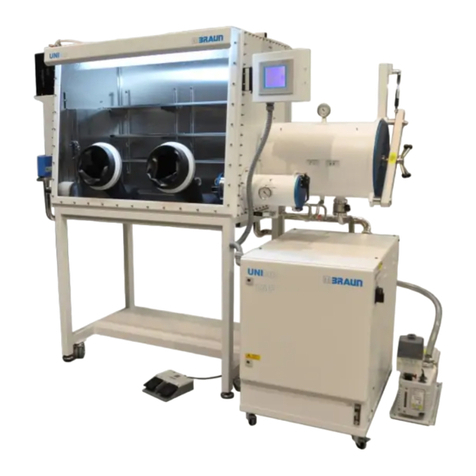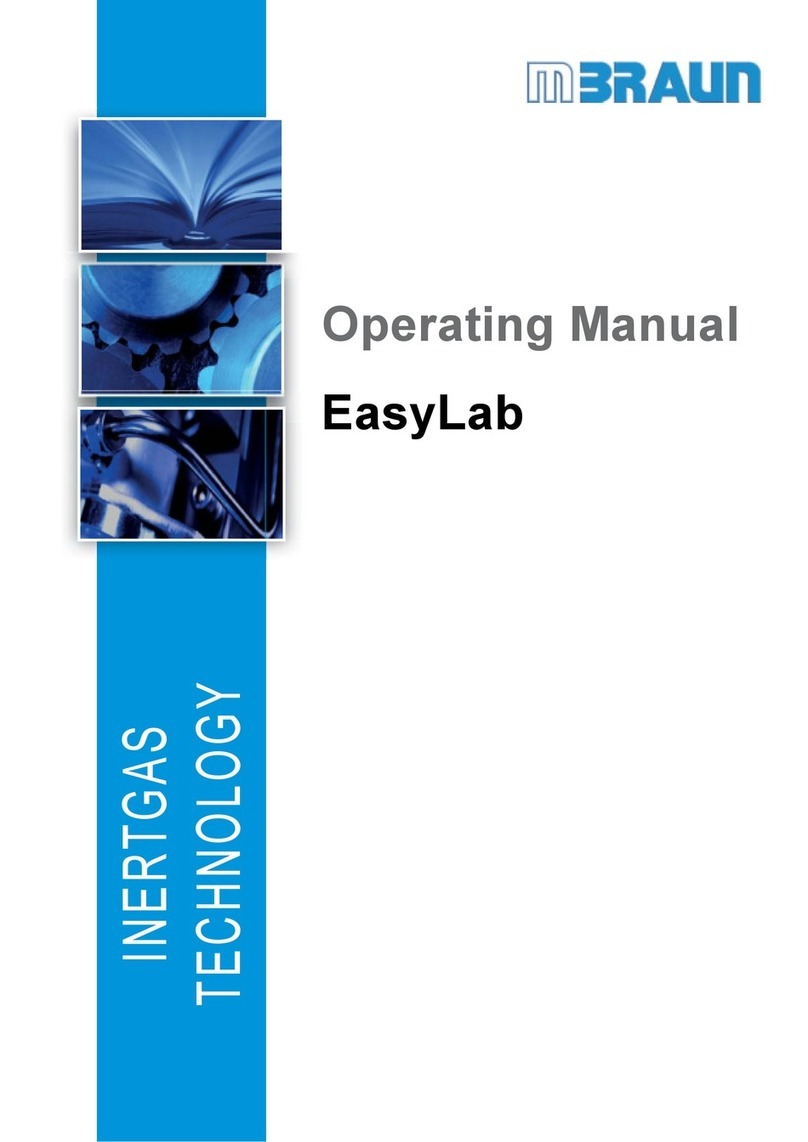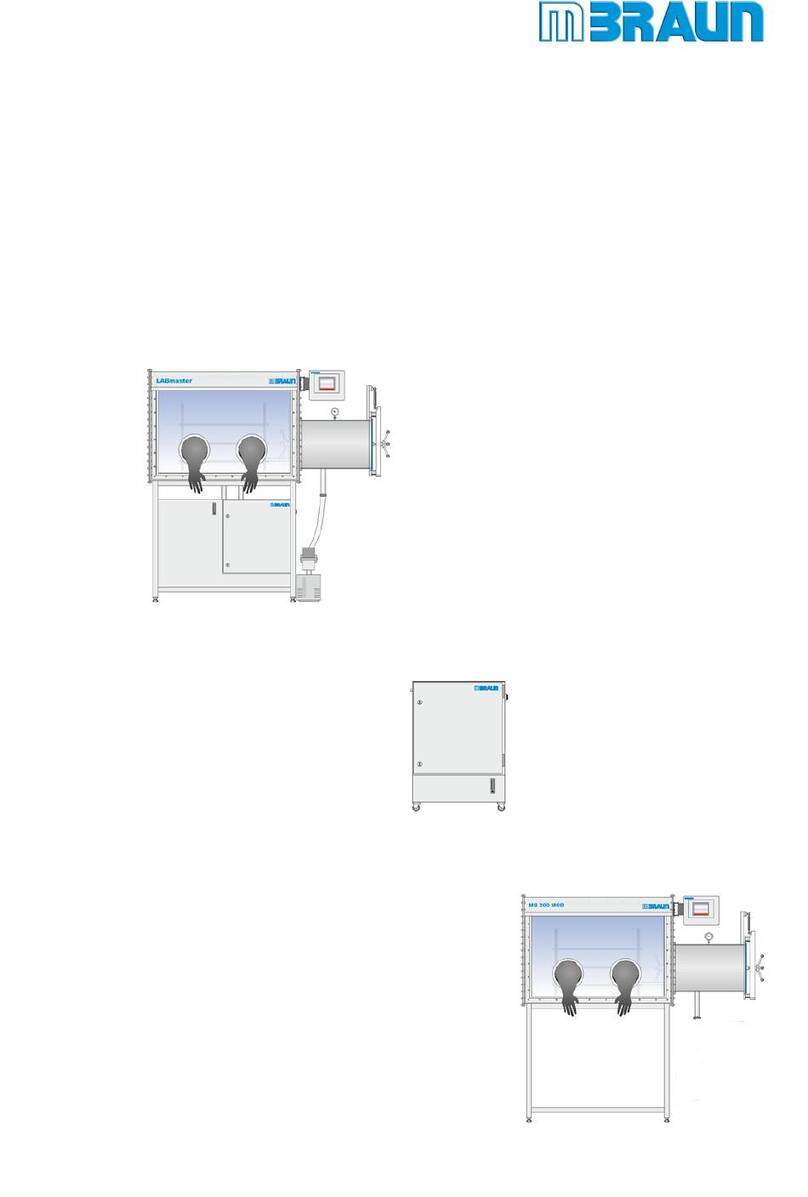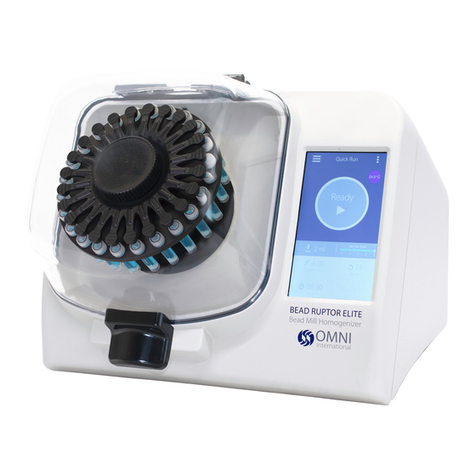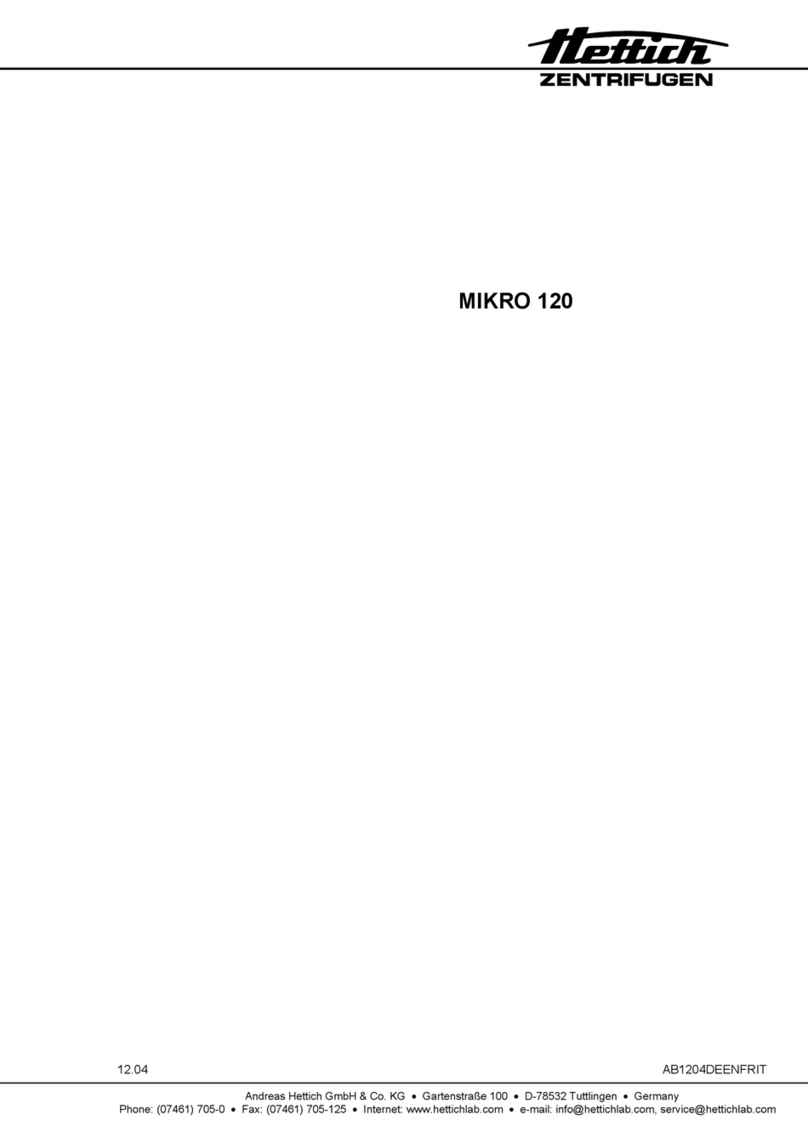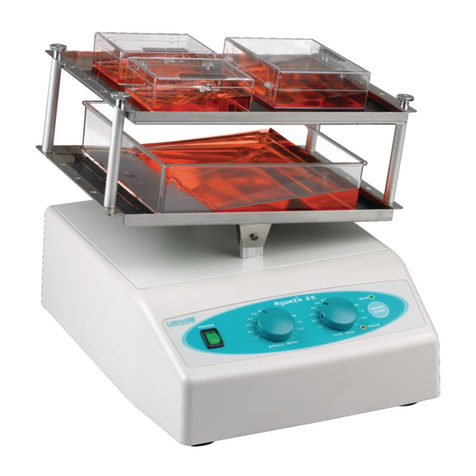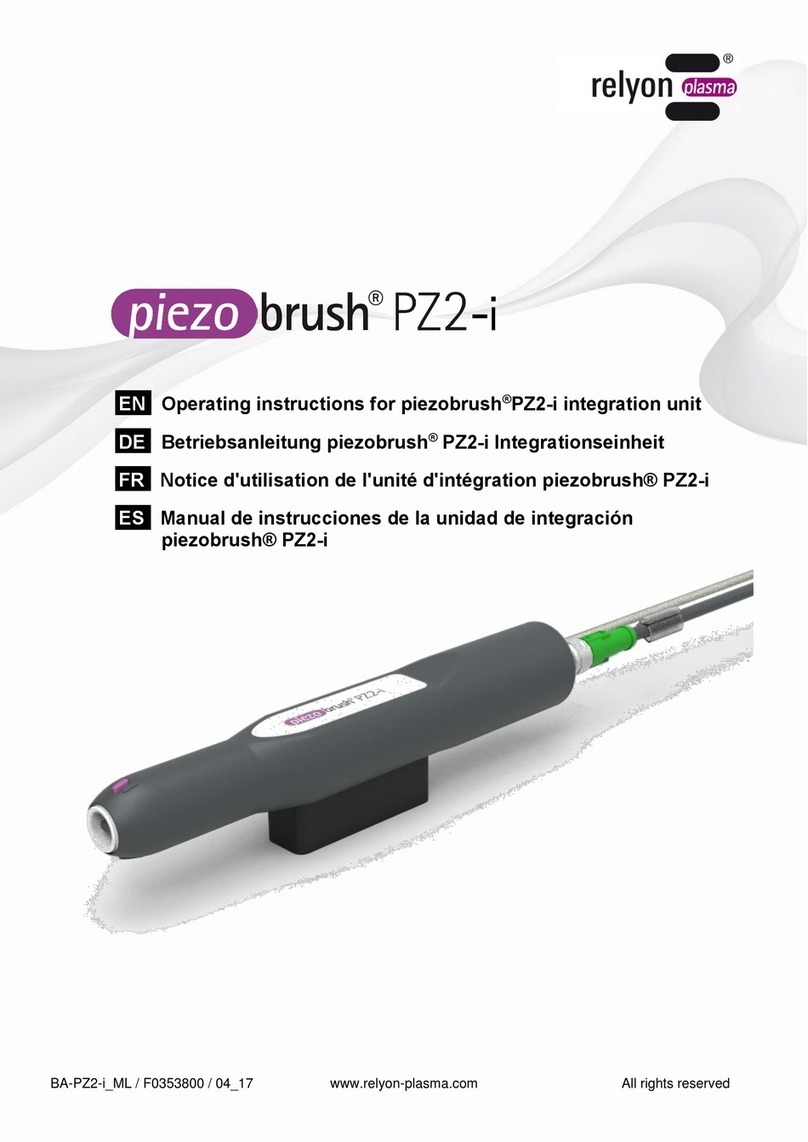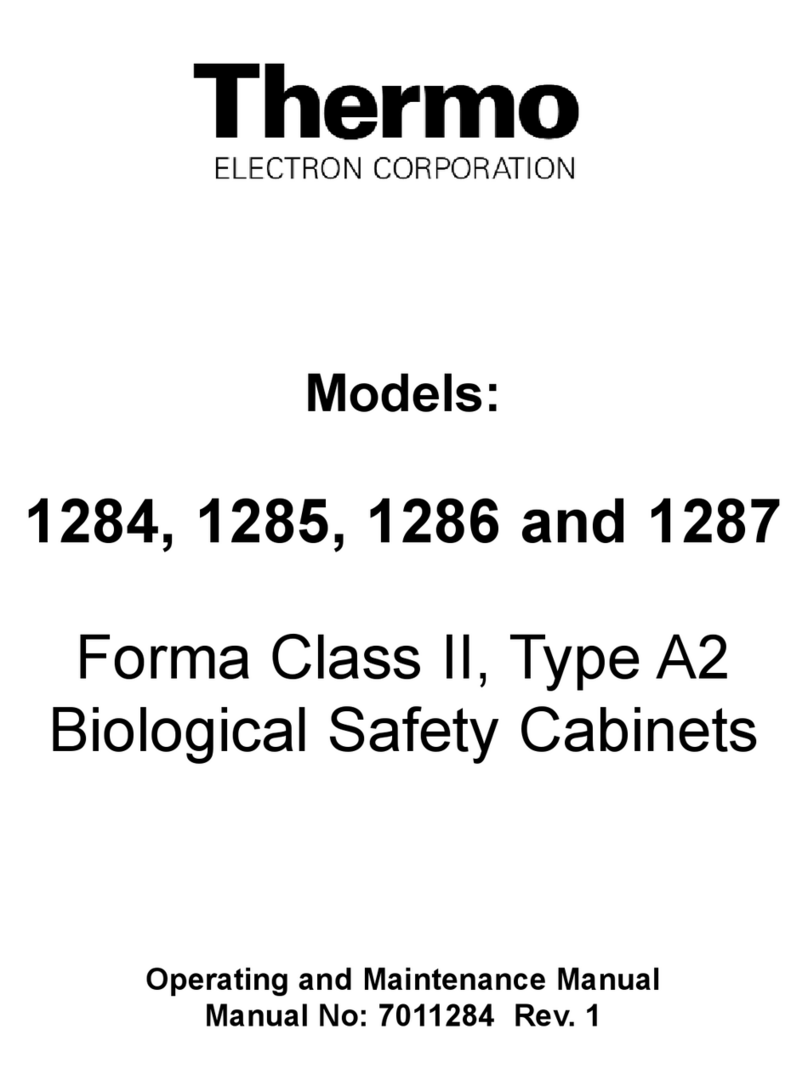MBRAUN LABmaster 130 User manual

Chapter 1 - General Information
Chapter 2 - Liability, Warranty and Safety
Chapter 3 - Principles of Operation
Chapter 4 - Touch Panel Operation
Chapter 5 - System Screens
Chapter 6 - Installation Requirements
Chapter 7 - Installation
Chapter 8 - Commissioning the System
Chapter 9 - System Operation
Chapter 10 - Maintenance & Troubleshooting

Edition Information: Edition January 2007
M.Braun, Inc.
14 Marin Way • Stratham, NH 03885
Phone 603-773-9333 • Fax 603-773-0008
www.mbraunusa.com
Revision Information: Revision 002
Title Operating Instructions – Supplement A
Technical Consultation: K. Prince, Programming
T. Daly, Service
Technical Assistance: K. Prince, Programming
T. Daly, Service
Layout: B. Adams, Quality Manager, M.Braun, Inc.
Publication edited by means of: Adobe Acrobat®, Adobe Photoshop®, Microsoft Word®
Important Notes: This technical documentation is not liable to any
obligations on the part of the manufacturer. The
manufacturer M.Braun, Inc. reserves the right for
technical and optical modifications as well as functional
modifications on the system or system’s components
described therein.
Any duplication of this documentation, even in the
forms of excerpts, is only permitted after having
obtained the manufacturer’s information and
concession.

Chapter 1
General Information
1.1 Liability....1-1
1.2 Contact Information....1-2

Operating Instructions – Labmaster©130 and MB20G Systems
Instruction Manual
Chapter 1: General Information
© MBraun, Inc. Edition 1/2007 Page 1-1
CHAPTER 1: GENERAL INFORMATION
1.1 Entries Referring to the System
This documentation is part of the system:
Designation / Type:
Series Number(s):
Persons In Charge of System:
Space left for notes on system settings, instructions for maintenance, etc.

Operating Instructions – Labmaster©130 and MB20G Systems
Instruction Manual
Chapter 1: General Information
© MBraun, Inc. Edition 1/2007 Page 1-2
1.2 Contact Information
M.Braun, Inc.
14 Marin Way
Stratham, NH 03885
Phone: 603-773-9333
Fax: 603-773-0008
Internet: www.mbraunusa.com

Chapter 2
Liability, Warranty
and Safety
2.1 General Information....2-1
2.2 Liability....2-1
2.3 Warranty....2-2
2.4 Operation Guidelines....2-2
2.5 Safety - General Hazards....2-3
2.6 Safety - Mechanical....2-3
2.7 Safety - Electrical....2-4
2.8 Safety - Handling of Electronic Components....2-5
2.9 Safety - Chemicals and Gases....2-5
2.10 Safety - Symbols Used on the System....2-6
2.11 Safety - Emergencies....2-6
2.12 Additional Information....2-7

Operating Instructions – Labmaster©130 and MB20G Systems
Instruction Manual
Chapter 2: Liability, Warranty & Safety
© MBraun, Inc. Edition 1/2007 Page 2-1
CHAPTER 2: LIABILITY,WARRANTY &SAFETY
2.1 General Information
Prior to installation, initialization and operation of the system, this manual should be read in its
entirety and positioned in a suitable area near the system to allow for easy reference. Any
persons charged with the transport, storing, installation, commissioning, operating, maintenance
and/or service of this system must be familiar with the entire contents of this manual.
To ensure safe operation of the system and to maintain a safe working environment, the
information contained within this chapter must be adhered to by all users of the system. Advice
contained in this chapter is intended to supplement, not supersede, the safety advice given in
other chapters of this manual and the general safety regulations and guidelines prevailing in the
user’s workplace.
In addition to the guidelines and information contained within this manual all internal and local
health, safety and environmental guidelines should be followed.
Safety instructions and pertinent information are marked in the following manner:
Indicates an imminently hazardous situation which, if not avoided,
will result in death, serious injury or serious damage to the system,
other equipment or surrounding environment.
Indicates a potentially hazardous situation which, if not avoided,
could result in death, serious injury or serious damage to the
system, other equipment or surrounding environment.
Indicates a potentially hazardous situation which, if not avoided,
may result in minor or moderate injury or damage to the system,
other equipment or surrounding environment.
Indicates additional advice or recommendations for using the
system or completing a task.
Please consider all instructions, in particular safety instructions, in order to achieve safe
operation of the system.
2.2 Liability
The manufacturer will not take any liability of object, personal or secondary damage caused by
improper use or ignoring of safety instructions as well as caused by the owner’s manual due to
missing updates after the system or its software have been modified, nor will the manufacturer
take any liability of damages due to loss of data. In addition, the terms of business that are part
of the order/contract will apply.
Our products are continuously modified an improved due to innovation, legal requirements and
standards. Consequently, the information give in this documentation may not accurately reflect
every detail of the system actually delivered. Please contact the manufacturer in cases of
uncertainty.

Operating Instructions – Labmaster©130 and MB20G Systems
Instruction Manual
Chapter 2: Liability, Warranty & Safety
© MBraun, Inc. Edition 1/2007 Page 2-2
2.3 Warranty
We guarantee the equipment as stated in the order/contract.
This warranty will expire in case of:
•Interference into or modification of the system without prior consent of the manufacturer;
•Improper use of the system;
•Insufficient maintenance of the system;
•Inappropriate operation of the system;
•Negligence of correct supply requirements;
•Application of third-part components to the system without prior consent of the
manufacturer;
•Alteration of program or configuration write-ups without manufacturer’s consent.
This applies to a single unit and multi-unit system types.
2.4 Operation Guidelines
MBRAUN glovebox systems are operated using inert gas enabling the user to handle
substances which are sensitive to oxygen and/or moisture. It is the responsibility of the user to
follow all local health, safety and environmental guidelines with regards to the handling and
disposing of substances which may be injurious to health. This also applies to the disposal of
vacuum pump oil and all components and filtering devices which come in contact with the gas
flow.
There is a risk of suffocation when working with high inert gas
concentrations.
On request, MBRAUN can recommend a personal measuring instrument that alerts the
operator to a reduction of oxygen content in the ambient air.
The following general safety guidelines must be considered when working with inert gas
concentrations:
•The selected location should have a “room” volume that is significantly larger than the
glovebox interior volume.
•The system should be located in a well ventilated area. This is especially important
during a purging procedure or when opening an active system (i.e. antechambers, etc.).
•All exhaust fumes should be vented through an adequate disposal/ventilation system.
Contact MBRAUN prior to the acquisition of the system if it is not
possible to adhere to all the above recommendations. This way the
system can be equipped with additional safety devices.
•Prior to performing maintenance or service inside an active system, remove one glove to
allow a slow equalization of the glovebox interior atmosphere with the ambient room air.
To better avoid the risk of suffocation, it is necessary for the
glovebox atmosphere to be completely replaced with ambient room
air prior to servicing the interior of an active glovebox.
Standard MBRAUN glovebox systems are not designed for the use
of strongly poisonous or radioactive substances. Use of these types
of materials must be coordinated with MBRAUN prior to the
acquisition of a system.

Operating Instructions – Labmaster©130 and MB20G Systems
Instruction Manual
Chapter 2: Liability, Warranty & Safety
© MBraun, Inc. Edition 1/2007 Page 2-3
2.5 Safety – General Hazards
This system has been designed and manufactured considering all relevant safety regulations.
Improper use or operation by persons not qualified accordingly may result in danger to the:
•Life and health of the operator;
•System itself;
•Surroundings of the user;
•Performance and efficiency of the system.
General hazards of the system may arise in the following ways:
•Mechanical hazard caused by squeezing, shearing and cutting, catching and winding,
stretching or by freely moving parts;
•Thrust caused by kinetic energy of moving mass;
•Sharp corners and edges;
•Electrical hazard caused by touching live parts (directly or indirectly);
•Thermal hazard causing burns;
•Chemical hazard causing poisoning, corrosion and explosion;
•Toxic hazard due to inhalation of vapours and gases;
•Gases under pressure;
•Liquids under pressure;
•Combination of hazards caused by:
– faulty installation
– incorrect loading
– breakdown of power or media supply
– breakdown and/or incorrect arrangement of preventive measures
– combination of escaping media
•Hazards caused by:
– human misconduct
– noise
– allergies, excitations of mucous membrane, unknown effects caused by media
– ejection of parts
– disturbance / malfunction of control system
– leaking of hoses or pipes
– combination of atmospheres or vapors
– fire hazard
– natural hazards e.g. lightning, flooding, environmental catastrophes etc.
2.6 Safety – Mechanical
Freely moving parts may cause squeezing, shearing and cutting,
catching and winding, stretching of extremities. Extreme caution
should be taken to avoid touching any moving parts of the system
during operation.
When handling materials with mechanical, pneumatic or vacuum systems it is possible that
materials may be ejected. Extreme caution should be taken to avoid any possible contact with
the ejected materials without proper protection.
Only genuine parts supplied by MBRAUN should be used in the operation of the system. These
parts are constructed in conformance with applicable safety regulations. No liability will be taken
by MBRAUN in the event of installation of parts manufactured by companies other than
MBRAUN which may result in additional and unknown hazards.

Operating Instructions – Labmaster©130 and MB20G Systems
Instruction Manual
Chapter 2: Liability, Warranty & Safety
© MBraun, Inc. Edition 1/2007 Page 2-4
Simultaneous operation of the system by two or more persons is not recommended as this may
cause hazards based on misconduct or mutual misunderstanding. In case of the system being
operated by two or more persons, operation should be conducted in such a way as to ensure
each individual’s respective task does not influence other tasks in any way.
Safety covers, panels, panes, windows or doors may not be removed at any time, unless there
is a need for service. The system may not be opened (i.e. antechambers, etc.) during
processing or power failures. In the case of any safety deficiencies, the system must be
decommissioned and the service personnel informed accordingly. During decommissioning
compliance with all local health, safety and environmental guidelines must be followed.
2.7 Safety – Electrical
This system operates under high voltage. Risk of injury caused by high voltages exists anytime
the system is connected to the power supply, this includes when the system is powered off.
Capacitors within the system may be charged when the system is switched off and
disconnected from main power supply.
Interchange of current bearing wires can result in electrical hazards
such as shock, involuntary muscle reaction, muscle paralysis, burnt
tissues and organs, or death.
Connection to the main power supply must be performed by a qualified electrician according to
local area guidelines. All neutral and ground wires must be connected accordingly.
Opening the system or removing parts when the system is powered on, may result in exposure
to live electrical connectors. Extreme caution should be taken to avoid directly or indirectly
touching live connectors to avoid possible electric shock.
Prior to performing any electrical service work on the system,
ensure the system is powered off and disconnected from the power
supply.
Service required while the system is in operation should only be performed only by qualified
personnel trained in the knowledge and prevention of all potentially dangerous and hazardous
situations.
The system must be grounded/earthed at all times. Do not remove or cut off any ground wire for
the system or its components. In case of insufficient grounding or damaged ground conductor
ensure the system will be inoperable and secure it against unauthorized or unintentional
operation.
Insufficient grounding can cause electrostatic charging of plastic
parts, hoses or pipes, wiring and/or the system as a whole, which
could cause solvents and process chemicals to ignite.
Replacement of fuses should be of the same type and current rating.
Makeshift fuses and/or short circuit fuse holders should never be
used in the operation of the system.

Operating Instructions – Labmaster©130 and MB20G Systems
Instruction Manual
Chapter 2: Liability, Warranty & Safety
© MBraun, Inc. Edition 1/2007 Page 2-5
2.8 Safety – Handling of Electronic Components
Electrostatic discharges can cause damage to parts. When handling electronic components the
following precautions should be observed:
a) Wear a grounded wrist strap or work on a grounded static-dissipating work surface. If
this not possible touch an adjacent earth ground (i.e. central heaters or water pipes)
before handling electronic components or printed circuit boards.
b) Leave electronic components and printed circuit boards in their original packaging
until final installation.
c) Handle electronic components by their body or case, avoid touching of leads.
d) Keep electronic components and printed circuit boards away from such static
generating materials as vinyl, plastic bags, etc.
Maintenance and repair work required, but not listed in this manual,
should only be carried out by MBRAUN service or by persons of
equivalent qualification.
2.9 Safety – Chemicals and Gases
Chemicals used in the system are not supplied by MBRAUN. Chemicals are provided and
applied by the system user.
Proper handling of chemicals, corrosives and solvents is the user's responsibility. Materials
used may be flammable, explosive, toxic.
Below are some guidelines to refer to when handling chemical substances:
•Ensure the all relevant Control of Substance Hazardous to Health (COSHH) guidelines
are followed;
•Observe relevant safety regulations as well as material safety data sheets (MSDS) and
additional advice provided by the supplier;
•Wear proper protective safety masks, gloves and eyewear whenever working with
chemicals, corrosives or solvents;
•Mark all containers and supply lines of chemicals (i.e. containers of media and waste)
with appropriate labels and warning signs;
•Ensure proper ventilation and exhaustion of vapours;
•Wear proper breathing protection to avoid the risk of suffocation;
•Keep away from ignition sources;
•Do not smoke;
•Do not ingest food or beverage while working with the chemicals, corrosives or solvents
to avoid the risk of poisoning.
Released chemicals may react with each other, leading to
unwanted and/or unknown substances, which may cause additional
risks.
Proper handling of gases is the user's responsibility. Gases used may be flammable, explosive,
toxic. Below are some guidelines to refer to when handling gaseous materials:
•Do not inhale the gas to avoid risk of suffocation.
•Prevent electrostatic charging and beware of ignition sources.
•Do not smoke.
When using corrosive, gassing or noxious materials, the safety of
all employees must be ensured by whatever means necessary.
Specifically, all employees must be trained in the safe handling of
the materials to be used.

Operating Instructions – Labmaster©130 and MB20G Systems
Instruction Manual
Chapter 2: Liability, Warranty & Safety
© MBraun, Inc. Edition 1/2007 Page 2-6
2.10 Safety – Symbols Used on the System
The following symbols refer to MBRAUN components and parts. However, components and
parts of sub-suppliers may show other symbols, not expressly mentioned or referred to in this
manual. The following caution and command symbols may be seen on the system:
General hazard Electrical hazard Fire hazard
Toxic hazard Explosion hazard Pressurised gas hazard
Wear safety mask Wear safety goggles Wear protective gloves
The owner of the system is responsible to place adequate danger
signals and labels in suitable places. This applies in particular to
signals and labels concerning process chemicals used. Regardless
of the number of caution symbols and information placed on or
around the system, all safety instructions of this manual must be
observed!
2.11 Safety – Emergencies
In case of an emergency, please observe the following instructions:
1. Immediately shutdown the system using the main power switch.
2. Disconnect the system from all gas supplies.
3. Refer to the material safety data sheets for information on treating the emergency.
Contact the appropriate emergency response personnel in the area and/or listed on the
material safety data sheets.
Do not disconnect the water supply for systems containing
components requiring a cooling water source.
Prior to restarting, the system must be fully checked for safety, contact the MBRAUN Service
Department after the emergency has been rectified.
In addition to the information contained in this manual all local
health, safety and environmental guidelines must be followed.

Operating Instructions – Labmaster©130 and MB20G Systems
Instruction Manual
Chapter 2: Liability, Warranty & Safety
© MBraun, Inc. Edition 1/2007 Page 2-7
2.12 Additional Information
The system is considered to be unsafe for operation if:
•there is any visible damage;
•it fails to perform according to specification;
•it has been subject to prolonged storage under unfavourable conditions;
•it has been subjected to severe transport stress.
If the system meets any or all of the above:
•make it inoperable;
•secure it against any unauthorized or unintentional operation;
•contact the MBRAUN Service Department.
Do not perform any service or repair of the system or its
components other than described in this manual.
Maintenance, repair and service other than described in this manual
may only be performed by MBRAUN service personnel or properly
trained/qualified individuals.

Chapter 3
Principles of Operation
3.1 Description of the System....3-1
3.2 Pressure Control System....3-1
3.3 Purging the System....3-2
3.4 Circulation Mode....3-3
3.5 Regeneration Mode....3-3
3.6 Antechamber Operation....3-4
3.7 Analyzers....3-5

Operating Instructions – Labmaster©130 and MB20G Systems
Instruction Manual
Chapter 3: Principles of Operation
© MBraun, Inc. Edition 1/2007 Page 3-1
CHAPTER 3: PRINCIPLES OF OPERATION
3.1 Description of the System
M.Braun glovebox systems, which are operated using a closed loop circulation method, provide
the user with a non-reactive atmosphere of <1ppm moisture and oxygen content. The system
has three major functions: Purging, Circulation and Regeneration. Each of these processes is
explained in detail in the following sections. For information for operating the system functions,
refer to Chapter 9 of this manual.
3.2 Pressure Control System
General Information
The system is equipped with a PLC operated pressure control system which starts automatically
when the system is activated. Upper and lower working pressure parameters, which are set by
the user, provide a comfortable range for the user to work in. Depending upon the application,
the system can be operated in the positive or negative pressure state.
Definition of Terms
Box Pressure Current pressure within the glovebox.
Working Range The range within the working setpoints at which the box
pressure fluctuates.
Upper Working Setpoint
Lower Working Setpoint
Adjustable setpoint parameters used to establish the working
range.
Limit Setpoint
The fixed value range between which the working parameters
can be set. This is a factory established range which cannot be
adjusted.

Operating Instructions – Labmaster©130 and MB20G Systems
Instruction Manual
Chapter 3: Principles of Operation
© MBraun, Inc. Edition 1/2007 Page 3-2
3.3 Purging the System
Purging the glovebox replaces the ambient air inside the box with the working gas by providing
a constant flow of working gas into and out of the box. The purge function can be performed
either manually by the user or automatically by the system. The automatic or “quick purge”
function is not included with all systems but is an available option that can be purchased at any
time after the glovebox has been installed and/or running for any period of time.
As a general guideline a system should be purged when the oxygen level inside the box
exceeds 100ppm. Possible reasons for an elevated oxygen level are:
•Initial commissioning of the system;
•Recent service or repair made to the system;
•Room atmosphere entering the box due to improper use;
•Leaks in the system or other damage (e.g. torn gloves, etc.).
The purging process can be performed three (3) different ways:
Reverse Purge
Performed on systems with no manual purge valve or automatic purge
function. This can also be performed on systems with either of the
mentioned options if the user chooses to do so.
The Reverse Purge method purges the working gas directly into the
user’s room environment, use caution when working in the vicinity of
a glovebox undergoing reverse purge.
Manual Purge
Performed on systems with a manual purge valve located on the top of
the glovebox system. This valve should be vented to a fume hood or
facility exhaust system.
Automatic Purge
Performed on systems with this function incorporated into the PLC
program via the VSA valve. This valve should be vented to a fume hood
or facility exhaust system.
Both reverse purge and manual purge procedures require the user to enter box pressure
setpoints in the PLC prior to beginning operation. The automatic purge function does not require
any parameters to be set prior to beginning the operation.
Purge time and gas consumption varies and is based on glovebox volume and the level of purity
required in the glovebox.
Figure 1 - Purge Gas Consumption
Figure 1 above shows that a desired box atmosphere purity of 10ppm requires approximately
14.50m³ of purge gas per cubic meter of box volume (refer to the Box Volume Table below):

Operating Instructions – Labmaster©130 and MB20G Systems
Instruction Manual
Chapter 3: Principles of Operation
© MBraun, Inc. Edition 1/2007 Page 3-3
Box Volume Table
Box Length 1250 Box Length 1500 Box Length 1800
Box Depth 780 28.86 f3/ .81 m334.63 f3/ .98 m341.56 f3/ 1.18 m3
Box Depth 1000 35.51 f3/ 1.00 m342.61 f3/ 1.21 m351.13 f3/ 1.45 m3
Box Depth 1200 43.45 f3/ 1.23 m352.14 f3/ 1.48 m362.57 f3/ 1.77 m3
3.4 Circulation Mode
Circulation mode is the normal operation mode for working within the glovebox system. During
normal operation working gas is continuously circulated between the glovebox and the gas
purification system. As the working gas passes through the filter column the oxygen and
moisture content is scrubbed from the gas. This provides the user with a consistent inert
glovebox environment in which to work.
Figure 2 - Principle of Circulation
3.5 Regeneration Mode
When the glovebox is used for an extended period of time, oxygen and moisture begins to
accumulate inside the purifier filter column which decreases the effectiveness of the circulation
process. Regeneration is the process of removing the excess oxygen and moisture from the
filter bed material inside the purifier column. This is a multi-step 16 hour process during which
the glovebox cannot be used for normal operation (circulation).
The regeneration procedure should not be interrupted at any time
during the process. If for any reason the process is terminated
prematurely, do not restart any system processes. Contact the
M.Braun Service Department immediately.

Operating Instructions – Labmaster©130 and MB20G Systems
Instruction Manual
Chapter 3: Principles of Operation
© MBraun, Inc. Edition 1/2007 Page 3-4
3.6 Antechamber Operation
General Information
The system is equipped with a large (and/or small) antechamber designed for transferring
material into or out of the glovebox without polluting the internal box atmosphere or the room
atmosphere. The antechamber(s) is equipped with an inner door, outer door and sliding tray to
ease in transferring materials.
Transferring material into and out of the box can be done in the Automatic or Manual Modes.
Both modes utilize the antechamber components and the touch screen. The chamber
undergoes several evacuation/refill cycles to clear the chamber of room or glovebox
atmosphere prior to removing the material from the chamber.
•An evacuated chamber cannot be opened. Attempting to open an
evacuated antechamber may damage the door locking
mechanism.
•Keep both antechamber doors closed when not transferring
materials.
Method of Operation
Open outer door and transfer material into antechamber
Close outer door
Evacuate antechamber
Refill antechamber with box gas
Repeat the Evacuate and Refill antechamber
steps according to the guidelines listed in
Chapter 9 Section 9.4 Antechamber Operation.
Open inner door and transfer material into glovebox

Operating Instructions – Labmaster©130 and MB20G Systems
Instruction Manual
Chapter 3: Principles of Operation
© MBraun, Inc. Edition 1/2007 Page 3-5
Important Notes
•Never open the inner and outer antechamber doors
simultaneously.
•Never open the inner door of an antechamber filled with room
atmosphere. This would result in pollution of the box atmosphere
which could cause damage to instruments and/or materials
inside the box.
•Depending on the materials used inside the glovebox, vapors
may be released into the room when material is transferred into
or out of the glovebox.
Material transferred between the glovebox and room atmosphere
must be able to withstand the pressure difference during the
antechamber purge process (e.g. partially filled vessels, etc.). Open
the seal slightly (e.g. lids of bottles, etc.) to allow the vessel to be
vented to prevent implosion.
3.7 Analyzers
General Information
This section applies only to systems that are equipped with oxygen and/or moisture analyzers.
Each analyzer contains a sensor head that is protected with a metal cap and electronics that are
used to measure (depending on the analyzer type) the oxygen or moisture content of the
working gas inside the glovebox. The analyzers are connected to the PLC via a cable with an
RJ45 connector.
While not all systems are equipped with one or both analyzers at the time of initial installation
they can be purchased at any time. Please contact the M.Braun Sales or Service Department
for further information.
Oxygen Analyzer (MB OX-SE-1©)
The oxygen analyzer, with a measuring range of 0 –
1,000ppm, monitors the atmosphere inside the glovebox for
residual oxygen content. The analyzer is designed to provide
exact readings within the range of 0 – 100ppm. An estimated
reading of the oxygen content is provided when the oxygen
level rises above 100ppm.
The sensor element is a miniaturized Zirconium Dioxide plate
operated at elevated temperature that is controlled by a
platinum resistor. The electronics are supplied with 24 V DC
and deliver a 0 – 10V signal proportional to the concentration
of Oxygen. An additional input for the electronics allows the
switching on and off of the sensor heating by means of the
PLC.1
Contact with Hydrogen, solvents and other aggressive gaseous
substances will cause permanent damage to the sensor.
1M.Braun, Inc., Sales Literature, MB OX-SE1© Oxygen Probe, (Edition 2/2004)

Operating Instructions – Labmaster©130 and MB20G Systems
Instruction Manual
Chapter 3: Principles of Operation
© MBraun, Inc. Edition 1/2007 Page 3-6
Moisture Analyzer (MB MO-SE-1©)
The moisture analyzer, with a measuring range of 0 –
350ppm, monitors the atmosphere inside the glovebox for
residual moisture content. The analyzer is designed to
provide exact readings within the range of 0 – 50ppm. An
estimated reading of the oxygen content is provided when the
oxygen level rises above 50ppm.
The sensor element consists of two (2) parallel platinum coils
coated with phosphoric acid, and a PT1000 temperature
sensor. The electronics are supplied with 24VDC and deliver
a 0 – 10V signal in proportion to the concentration of H20.2
2M.Braun, Inc., Sales Literature, MB MO-SE1©Oxygen Probe, (Edition 2/2004)
This manual suits for next models
1
Table of contents
Other MBRAUN Laboratory Equipment manuals
Popular Laboratory Equipment manuals by other brands

Hitachi Aloka Medical
Hitachi Aloka Medical AccuFLEX LSC-8000 instruction manual

Star Lab
Star Lab N2400-4001 user manual

Star Lab
Star Lab Microcentrifuge 24 Original instruction

Planet
Planet IPOE-162 user manual
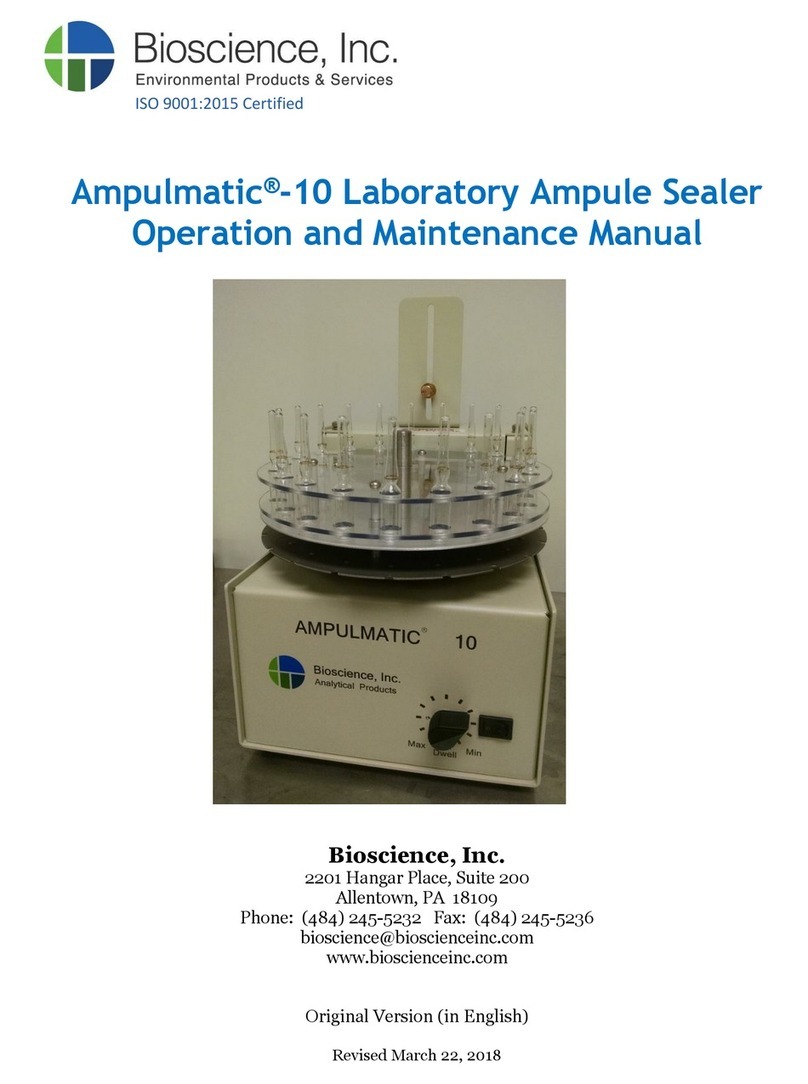
Bio-Science
Bio-Science Ampulmatic-10 Purge Gas Injector Operation and maintenance manual

LABBOX
LABBOX KJD20 user manual
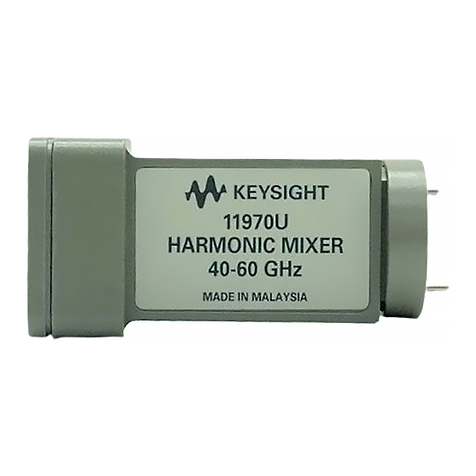
Keysight
Keysight 11970 Series user guide

Thermo IEC
Thermo IEC Centra-CL2 instruction manual
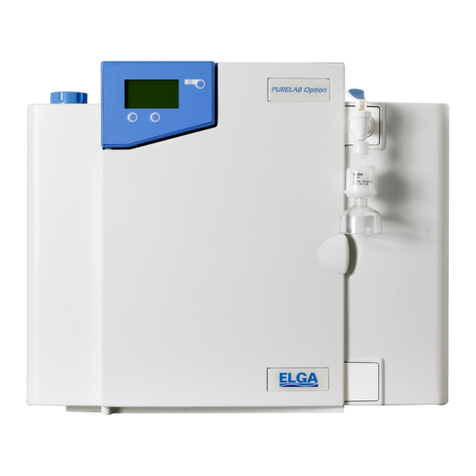
ELGA
ELGA PURELAB Option-Q 7/15 - US Operator's manual

Optika Italy
Optika Italy ACCESSORIES Series instruction manual

Miltenyi Biotec
Miltenyi Biotec CliniMACS Plus System user manual
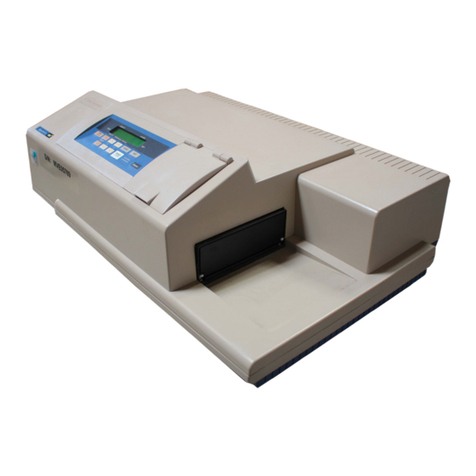
Molecular Devices
Molecular Devices SpectraMax M3 user guide
